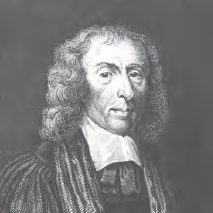Early Modern PhilosophyThe Cambridge Platonists |
Who was Henry More? |
Henry More (1614–1687) was the great-grandson of the martyred English chancellor, Sir Thomas More. Henry enrolled in Christ College, Cambridge, at the age of 17, and remained there his entire life. He became a fellow in 1641. His distinctive mission was to eradicate, or “cure,” atheism and enthusiasm, which he called “two enourmous distempers of the mind.” He sought to convert philosophers to the Christian faith, as he understood it, and his interests included Neoplatonism, reports of witches and ghosts, science, and René Descartes’ (1596–1650) philosophy.
He differed with Descartes, however, in insisting that animals have souls. He attacked Thomas Hobbes (1588–1679) and Benedict de Spinoza (1632–1677) for their presumed “atheism.” He was a tutor to Cambridge Platonist Anne Conway (1630–1679) and deplored her enthusiastic conversion to Quakerism. He is said to have coined the terms “Cartesianism” and “materialist.” Henry More’s writings included a history of the English Jesuits, translations, and his Life and Doctrines of our Saviour Jesus Christ (1660).

